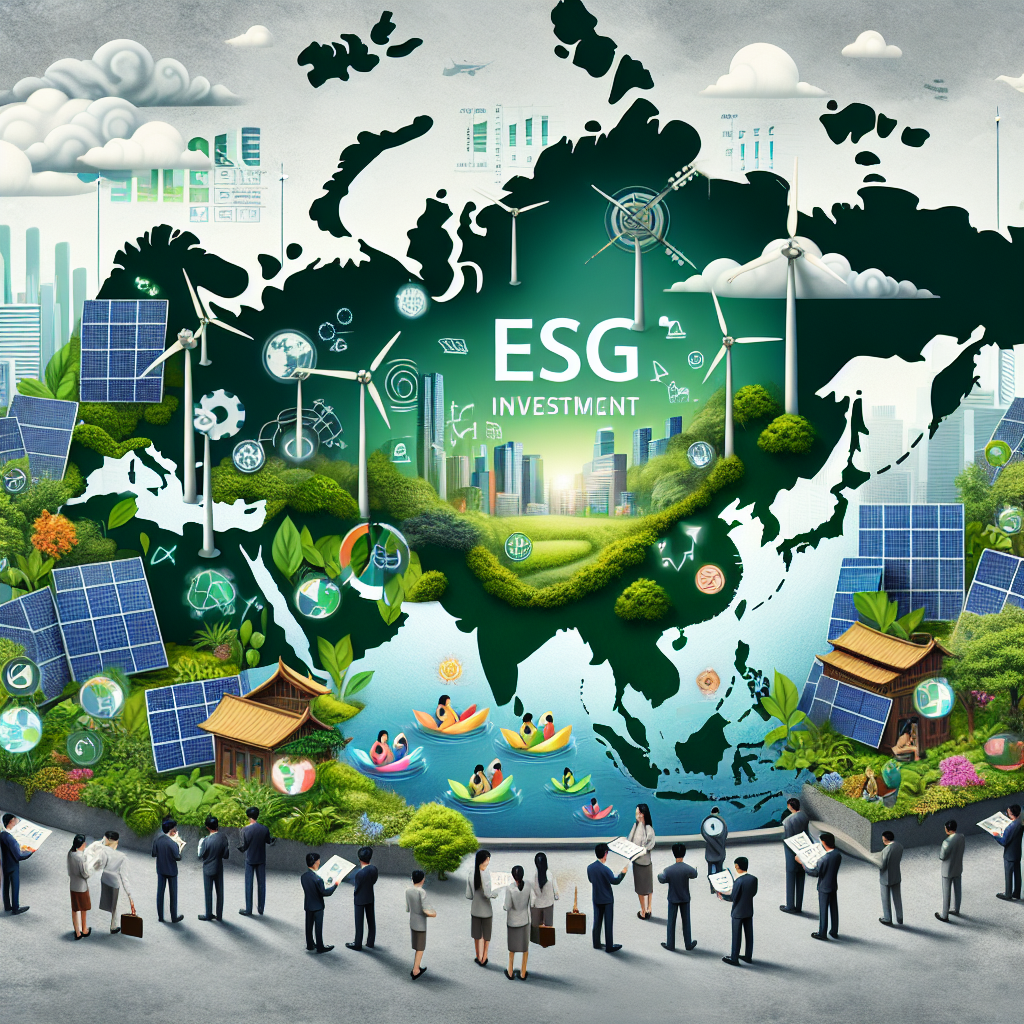ESG Investing in Asian Markets: Regional Trends and Best Practices

As the world increasingly prioritizes sustainability, ESG (Environmental, Social, and Governance) investing has emerged as a pivotal strategy for investors seeking to align their portfolios with ethical values. In Asian markets, this trend is gaining momentum, driven by a growing awareness of climate change, social responsibility, and corporate governance. This article aims to explore the current landscape of ESG investing in Asia, highlighting regional trends, best practices, and the challenges investors face. By understanding these dynamics, investors can make informed decisions that not only yield financial returns but also contribute positively to society and the environment.
Understanding ESG Investing in Asia
ESG investing refers to the integration of environmental, social, and governance factors into investment decisions. In Asia, the concept is evolving rapidly, with various countries adopting different approaches based on their unique socio-economic contexts. According to a report by the Global Sustainable Investment Alliance, Asia accounted for approximately 12% of global sustainable investment assets in 2022, a significant increase from previous years.
One of the primary drivers of ESG investing in Asia is the increasing regulatory pressure from governments. For instance, countries like Japan and South Korea have implemented policies encouraging companies to disclose their ESG practices. This regulatory push is essential for fostering transparency and accountability among corporations, ultimately benefiting investors.
Key Trends in ESG Investing Across Asia
Several trends are shaping the ESG investing landscape in Asian markets:
- Increased Institutional Participation: Institutional investors are increasingly incorporating ESG criteria into their investment strategies. In 2022, over 60% of institutional investors in Asia reported that they consider ESG factors when making investment decisions.
- Focus on Climate Change: With Asia being one of the most vulnerable regions to climate change, there is a heightened focus on investments that address environmental sustainability. For example, renewable energy projects are attracting significant capital.
- Social Responsibility: The COVID-19 pandemic has amplified the importance of social factors, such as employee welfare and community engagement, leading to a rise in socially responsible investments.
Best Practices for ESG Investing in Asian Markets
To effectively navigate the ESG investing landscape in Asia, investors should adopt several best practices:
- Conduct Thorough Research: Investors should analyze companies’ ESG performance through reliable data sources and ratings. Tools like MSCI ESG Ratings and Sustainalytics can provide valuable insights.
- Engage with Companies: Active engagement with companies regarding their ESG practices can lead to improved transparency and accountability. Investors should not hesitate to ask questions and seek clarifications.
- Diversify Investments: Diversifying across sectors and geographies can mitigate risks associated with ESG investing. This approach allows investors to balance their portfolios while supporting various sustainable initiatives.
For instance, the case of the Singapore-based investment firm, Temasek Holdings, illustrates effective ESG practices. Temasek has committed to achieving net-zero emissions by 2050 and actively invests in sustainable technologies, showcasing how institutional investors can lead by example.
Challenges and Misconceptions in ESG Investing
Despite the growing interest in ESG investing, several challenges persist. One common misconception is that ESG investments sacrifice financial returns. However, research indicates that companies with strong ESG practices often outperform their peers in the long run. A 2022 study by Morgan Stanley found that sustainable equity funds outperformed traditional funds by an average of 3.5% annually.
Another challenge is the lack of standardized ESG metrics, which can lead to confusion among investors. Different rating agencies may evaluate companies based on varying criteria, making it essential for investors to understand the methodologies behind these ratings.
“Investors are increasingly recognizing that ESG factors can have a material impact on financial performance.” – Jane Doe, ESG Analyst
The Future of ESG Investing in Asian Markets
The future of ESG investing in Asia looks promising, with several factors contributing to its growth:
- Technological Advancements: Innovations in data analytics and artificial intelligence are enhancing the ability to assess ESG performance, making it easier for investors to make informed decisions.
- Growing Consumer Demand: As consumers become more environmentally conscious, companies are incentivized to adopt sustainable practices, further driving the demand for ESG investments.
- International Collaboration: Increased collaboration between Asian countries and global organizations is fostering a more robust ESG framework, encouraging best practices across the region.
In conclusion, ESG investing in Asian markets is not just a trend; it is a fundamental shift in how investors approach their portfolios. By understanding regional trends, adopting best practices, and overcoming challenges, investors can contribute to a more sustainable future while achieving their financial goals. As the landscape continues to evolve, one must ask: How will you align your investments with your values?





